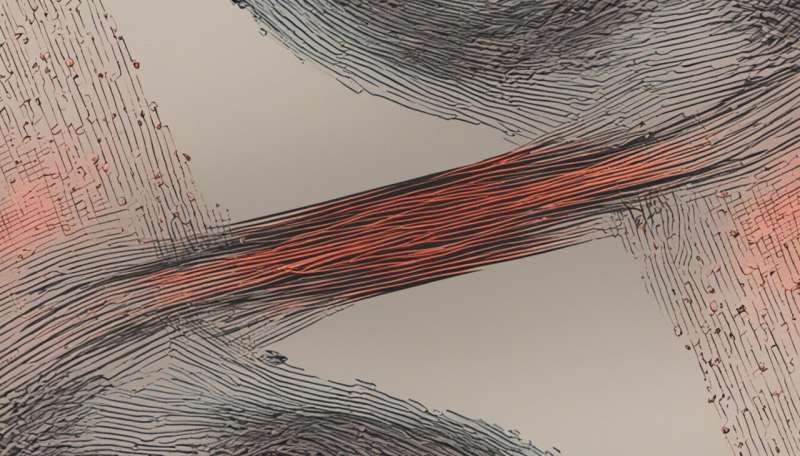Credit: AI-generated image (disclaimer)
Random-access memory (RAM) is a fast electronic device used in computers to temporarily store data. Traditional RAM is based on the flow of electrical current for data processing. To make RAM faster, more energy efficient and capable of storing more information in a smaller volume, hardware developers are investigating RAM based on magnetic fields. Miniaturization of these devices, however, is hampered by thermal instabilities. Hao Meng and his co-workers at the A*STAR Data Storage Institute have now shown how electric fields can help to circumvent this instability in tiny magnetic memories, as well as reduce operating power. "This means more information can be stored in a single chip at a cheaper price," says Meng.
Meng and his team investigated a type of memory that incorporates so-called 'magnetic tunnel junctions' (MTJs). Other researchers have previously observed electric-field induced improvements in MTJs, but only in fairly large devices—about 7 micrometers across. Large structures limit the writing speed and suffer from poor compatibility with other electronic components. Meng and his team demonstrated that the concept is also applicable to smaller and faster MTJs that can be integrated more easily.
MTJs are an ideal building block for magnetic memories because of their simplicity and large output signal. In general, they consist of just two magnetic layers separated by a thin insulating barrier (see image). A current passing through the device writes the binary information by controlling the direction of the magnetization in one of the magnetic layers. This process stores information as either a 'one' or a 'zero', depending on whether the induced magnetization is parallel or antiparallel to the magnetization of the second magnetic layer. A measurement of the resistance across the intermediate barrier can then read out the information as it is needed.
The researchers are working to make MTJs smaller so that they can squeeze in more information. However, smaller devices require larger current densities to switch the magnetization: this leads to heating and makes them less efficient. As a workaround, Meng and his co-workers applied just 0.2 volts across electrodes attached to each side of a 150-nanometer MTJ made of CoFeB-MgO. This reduced the magnetic field required to switch the magnetization by as much as 30% which, in turn, decreased the writing current density.
"Such devices could improve the data transfer rate; that is, how fast you can copy your files from one device to another," says Meng.
More information: Meng, H., Sbiaa, R., Akhtar, M. A. K., Liu, R. S., Naik, V. B. & Wang, C. C. Electric field effects in low resistance CoFeB-MgO magnetic tunnel junctions with perpendicular anisotropy. Applied Physics Letters 100, 122405 (2012). dx.doi.org/10.1063/1.3695168
Journal information: Applied Physics Letters






















